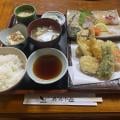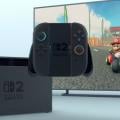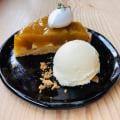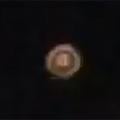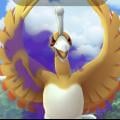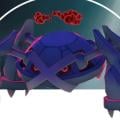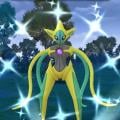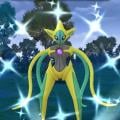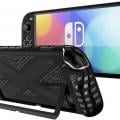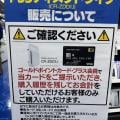ナサニエル・ラッセル 来日インタビュー / Interview with Nathaniel Russell about “False Music” and more


スケートボードやサーフィンのシーンを中心に幅広く活躍し、アメリカのみならず世界中に多くのファンを持つアーティスト、ナサニエル・ラッセル。ペインティングやウッドカット、シルクスクリーンをはじめ、ブックカバーやアルバムジャケット、壁画など、多彩な手段で独特な世界観を表現しているほか、ミュージシャンとしても活動している。ここ数年は日本でも個展を開いており、今年も10月に東京・幡ヶ谷のThe Beach Galleryにて、架空のアルバムジャケットをテーマにした「False Music: Paintings About Records」を開催した。ここでは来日したナサニエルにインタビューを行い、インスピレーションやものづくりについて語ってもらった。(→ in English)
——まずはバックグラウンドについて教えてください。出身はどちらですか?アートに興味を持ったきっかけは?
ナサニエル・ラッセル「出身はインディアナ州インディアナポリス。アートに興味を持ったのはかなり幼い頃なんだ。『MAD』誌や新聞のマンガに夢中になって、大きくなってからはスケートボードやいろんな種類の音楽に興味を持ち、そういった趣味に関連したあらゆるイメージにはまっていった。大学では版画を専攻して、それ以来、ずっとものづくりを続けている」
——当初はベイエリア(サンフランシスコ周辺の都市圏)で活動していたそうですが、なぜカリフォルニアを選んだのですか?
ナサニエル・ラッセル「10歳の頃、父親とサンフランシスコに行ったんだ。父の出張だったんだけど、エンバカデロ・センターに連れて行ってもらって、その印象が強く残った。それに僕は昔からサンフランシスコ発の音楽やアートとか、サンフランシスコで撮影された映画が大好きだったんだ。だから、住んでみたいと思うのは本当に自然なことだった」

——ものづくりをするにあたって、最初にインスピレーションとなったのは?
ナサニエル・ラッセル「幼い頃の僕は叔父にインスパイアされていたんだ。叔父はよくマンガを描いたり、ペンとインクで納屋の完成予想図などを描いたりしていた。僕は彼のことをものすごく尊敬していたんだ。大きくなってからは、音楽やスケートボードの雑誌で見て心に響いたアートワークがインスピレーションとなった。それに両親もときどき美術館に連れて行ってくれたり、アートのレッスンを受けるよう勧めてくれたりして、たくさんのものに触れさせてくれたんだ」
——インディアナのアートシーンはどのような感じですか?
ナサニエル・ラッセル「他のどの都市とも同じように、一つの大きなシーンの中にたくさんの多彩な細かいシーンが存在しているんだ。僕自身が属していると感じるシーンは、ベイエリアのシーンと似ている。とてもDIY志向で、非伝統的で、実験的だけど純粋なフィーリングや体験に根付いているんだ」

——ウッドカットやシルクスクリーン、絵画や壁画など、さまざまなアートを制作されていますね。テーマと表現手段は事前に決めているのですか? それとも作っていくうちにコンセプトが浮かび上がってくるのでしょうか?
ナサニエル・ラッセル「いつも最初にイメージを考えて、ちょっとしたスケッチをするんだ。ときには異なる手段を試してみて、どれが一番うまくいくかを見ることもある。でもほとんどの場合は、ウッドカットや壁画など作りたいものがわかっていて、そのために具体的に何をするか考えるんだ」
——ちょっとクスッと笑えるような言葉やフレーズが入った作品も多いですよね。作品にフィーチャーする言葉はどのようなところから生まれるのですか? 作品における言葉の重要性は?
ナサニエル・ラッセル「ああいった言葉は、いつも持ち歩くようにしているノートに書いてあるんだ。僕にとっても作品にとっても、言葉はとても大切なものだよ。僕はそういった言葉を詩や歌詞として考えていて、文字の輪郭は形として考えている。僕の頭の中では、文字は絵と同じくらい重要なんだ」

——Fake Flyers(架空のフライヤー)のシリーズは、どのように始まったのですか?
ナサニエル・ラッセル「あれは自分自身のための小さなプロジェクトとしてスタートしたんだ。ジョークとしてああいったアイデアを考えていたんだけど、それをリアルなものにしたかった。それからさらに興味が深まって、人々からの反響もあったので、どんどん作るようになってシリーズが続いている」

——公式サイトにて無償で提供されている、“Resist Fear / Assist Love”のイラストについて教えてください。
ナサニエル・ラッセル「あの絵はドナルド・トランプが大統領に当選した後に描いたんだ。別に大きな声明だとか、何かしらの解決策として作ったわけではない。僕はただ、たとえ不完全な形だとしても、より平穏な生活に向かって前進する方法について、何らかのフィーリングを言葉にして発したかっただけなんだ。あっという間にできたものだけど、言葉についてはたくさん考えたよ。あの絵に対して、他の人たちがポジティブな形で反応してくれるのを見るととてもうれしい。あのデザインのタトゥーを入れている人も何人か見たことがあるし、世界中であの絵を目撃している。最高の気分だよ」
——10月に東京で開催された個展「False Music: Paintings About Records」は素晴らしかったです。レコードに関する作品を作ろうと思ったきっかけは?
ナサニエル・ラッセル「実は架空のレコードをテーマにした個展は、ギャラリー(東京・富ヶ谷のThe Beach Gallery)のオーナーの井出靖さんのアイデアだったんだ。僕は過去の個展で(架空のレコードを)いくつか展示したことがあって、ここ数年でときどき作っていたんだけど、彼はあのスペースに架空のレコードを展示したら素晴らしいコレクションになるのではないかと思ったそうだ。それで僕にやってみないかと勧めてくれた。僕は課題やプロジェクトを与えられるのが好きなんだ」

——個展のタイトル「False Music」に込められた意味は?
ナサニエル・ラッセル「False Musicという言葉の響きが好きだから名付けたんだ。その意味は不明確だけど、目には見えない隠れた具体的な定義を示している。音楽ではないものって何だろう? それぞれの架空のジャケットを見て、どんな音楽なのかを想像してほしいんだ」
——個展では実際にレコードも販売されていましたね。音楽制作はいつから始めたのですか? アートと音楽の楽しみ方の違いは?
ナサニエル・ラッセル「音楽制作は20歳の頃に始めたんだ。独学でギターとレコーディングを習得して、最終的に曲作りと歌も覚えた。昔はアートと音楽を分けていたんだけど、今では音楽もアート活動の自然な要素だと考えている。どちらも出発点は同じだよ。僕にとっては、言葉とイメージと音とフィーリングなんだ。曲と絵の中で同じ言葉を使うのも好きだよ」
——今回の来日はいかがでしたか? 何かインスピレーションは得られましたか?
ナサニエル・ラッセル「滞在期間が短すぎたけど、日本ではいつでも仕事をしたり、インスピレーションを得たり、穏やかな瞬間を楽しんだりと、バランスよく時間を過ごせるんだ。今回はコンサートに行ったり、いくつかの美術館を訪れることもできたし、いろんなものを食べた。いつも旅をするときは、ぼんやりと物思いにふける時間が持てるのがうれしい。普段はそういう時間に良いアイデアが生まれるんだ」

——制作中に壁にぶつかることはありますか? そういう時はどうしますか?
ナサニエル・ラッセル「退屈に感じたり、だらけたり、疲れたりすることはよくあるよ。でも、そういう時にやる気を起こしたり、新たな視点から見直したりできるように、アイデアやリストをノートに書き留めてあるんだ。もし本当に何も感じられないときは、その時間を使って荷物を梱包したり、スタジオの掃除をしたり、フレームやパネルを作ったりと、より肉体的な作業をすることにしている」
——若いアーティストの卵たちに、何かアドバイスがあれば教えてください。
ナサニエル・ラッセル「とにかくものづくりを続けて。四六時中。あとはアートショーや音楽やプロジェクトなど、友だちとものづくりをしてみてほしい。クリエイティブな仕事をする上での究極の報酬は、その過程で生まれるすべての友情なんだ。良い作品を作ることは最高だし、満足感も得られるけど、理解し合える友人たちと過ごす時間こそが本物のギフトだよ。もし可能であれば、お金よりも経験を追い求めてみてほしい」

artwork Nathaniel Russell
text Nao Machida
Nathaniel Russell
http://nathanielrussell.com
https://www.instagram.com/nathanielrussell/


——First of all, could you tell us a bit about your background? Where are you from? How did you get into art?
Nathaniel Russell: I am from Indianapolis, Indiana. I got into art when I was very young. I was very into MAD magazine and newspaper comics, later I got into skateboarding and different kinds of music and all the different imagery that is so intertwined in those pursuits. I studied printmaking in college and I’ve been trying to keep making things ever since.
——What brought you to the Bay Area?
NR: I visited San Francisco with my dad when I was 10. He was on a business trip and I was able to explore Embarcadero Center and it really stuck with me. I always loved the music and art that came from there as well as all the movies I saw that were filmed there. It just felt really natural to want to live there.

——What were some of your early inspirations for art?
NR: Early on, I was inspired by my uncle who drew a lot of cartoons and pen and ink renderings of barns and things like that. I really looked up to him. Later, it was through music and skateboard magazines that I saw artwork that resonated with me. My parents also exposed me to a lot, taking me to art museums every now and then and encouraging me to take classes.
——What is the art scene like in Indiana?
NR: Just like everyplace, there are a lot of different small scenes inside one big scene. The one I find myself working in seems to come from a similar place as the one in the Bay Area: very DIY, non-traditional, experimental but rooted in genuine feeling and experience.

——You work on different mediums such as woodcuts, silk screens, paintings, murals, etc. Do you decide on the theme and the medium first? Or do you just start creating and a concept comes out of it?
NR: I usually just think of an image first and do a little sketch. Sometimes I try out different mediums to see what works best. Most of the time, though, I know I want to make a woodcut or a mural and I think of something for it specifically.
——Many of your pieces feature words/phrases that often make me chuckle. Where do these words come from? How important are they in your work?
NR: They come from my notebook I try to keep with me. They are very important to me and to the work. I think of them as poems and lyrics, and I also consider the shapes of the letters as forms. They are just as important as the image in my mind.

——How did the fake flyers series start?
NR: As a little project for myself. I had these ideas that I thought of as jokes, and I just wanted to make them real. And then I got more interested in it and people responded to them, so I made more and more and they continue to live on.

——Could you tell us why you made “Resist Fear / Assist Love” drawing?
NR: I made that drawing after Donald Trump was elected president. It wasn’t meant as a big statement or as some sort of solution. I just wanted to articulate some kind of feeling of how to move forward, even in an imperfect way, towards a more peaceful existence. It was made very quickly but I thought about the words a lot. It was very cool to see other people respond in a positive way to it. I’ve seen a few people get tattoos, I’ve seen it all over the world. It’s a great feeling.
——Your latest show in Tokyo (“False Music: Paintings About Records” at The Beach Gallery) was great! What motivated you to make paintings about records?
NR: The gallery owner Yasushi Ide actually had the idea for a whole show of fake records. I had included a few in a previous show and I’ve made them off and on for the past few years. He thought they would make for a great collection in his space. He encouraged me to do it and I like having an assignment or a project.

——Why did you decide to call it “False Music”?
NR: It’s called “False Music” because I like the way those words sounds. Its meaning is unclear but suggests a specific definition that is hidden from view. What isn’t music? I hope that people imagine what the music might sound like for each fake cover.
——You also made an actual record for the show. When did you start making music? How do you enjoy making music compare to making visual art?
NR: I started making music when I was 20. I forced myself to learn to play guitar and record music and eventually to write songs and sing. I used to keep the two things apart, but now I consider the music to be a natural component to my art practice. It comes from the same starting point. It’s word and image and sound and feeling to me. I like to use the same words in songs and paintings too.
——How was your stay in Japan this time? Did you get any inspirations?
NR: My stay was too short but I am always able to fill my time with a balance of work, inspiration and peaceful moments. I saw some concerts, I went to a few museums and I ate a lot of food. Most of the time when I travel, it’s nice to just have time to wander and get lost in my head. Good ideas come from that, usually.

——Do you ever hit a creative wall? If you do, what would you do?
NR: I often feel uninspired or lazy or tired. But I keep a notebook of ideas and lists for these times, to spark some energy or to revisit something with a fresh perspective. If I really don’t feel anything, I use that time to pack boxes, clean the studio or do the more physical parts of the work like making frames or panels.
——Do you have any advice for young aspiring artists reading this?
NR: Just keep making things. All the time. And try to make things with you friends: art shows, music, projects. The ultimate reward of working in a creative way is all the friendships you make along the way. Making good work is great and rewarding, but having friends to spend time with that understand you and vice versa is a true gift. Try to go after experiences more than cash if you can.

artwork Nathaniel Russell
text Nao Machida
Nathaniel Russell
http://nathanielrussell.com
https://www.instagram.com/nathanielrussell/
都市で暮らす女性のためのカルチャーWebマガジン。最新ファッションや映画、音楽、 占いなど、創作を刺激する情報を発信。アーティスト連載も多数。
ウェブサイト: http://www.neol.jp/
- ガジェット通信編集部への情報提供はこちら
- 記事内の筆者見解は明示のない限りガジェット通信を代表するものではありません。


